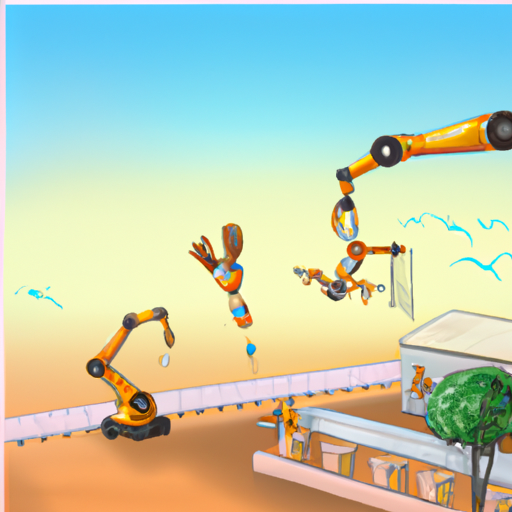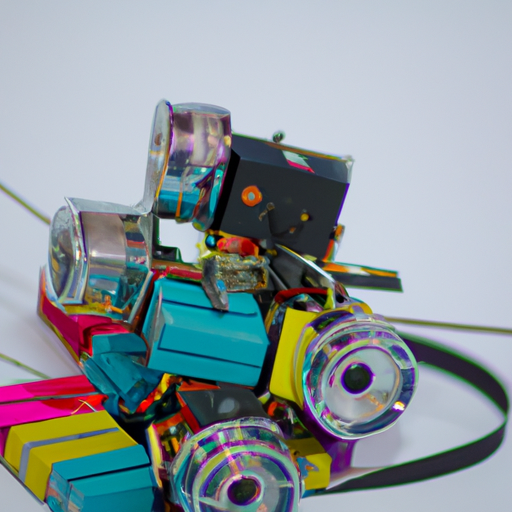-
Table of Contents
“Robots for Every Need: Unlocking the Possibilities of Automation.”
Introduction
Robots are becoming increasingly prevalent in our lives, from industrial robots used in manufacturing to service robots used in homes and businesses. Robots are machines that are programmed to perform specific tasks autonomously or semi-autonomously. They can be used to automate processes, reduce labor costs, and increase efficiency. There are many different types of robots, each with its own unique capabilities and applications. In this article, we will explore the different types of robots and their uses.
Exploring the Different Types of Industrial Robots and Their Uses
Industrial robots are automated machines that are used to perform a variety of tasks in industrial settings. They are designed to increase efficiency, reduce costs, and improve safety in the workplace. Industrial robots are used in a wide range of industries, including manufacturing, automotive, aerospace, and medical.
Industrial robots come in a variety of shapes and sizes, and each type of robot has its own unique capabilities and uses. The most common types of industrial robots are articulated robots, SCARA robots, delta robots, and cartesian robots.
Articulated robots are the most common type of industrial robot. They are designed to mimic the movements of the human arm and are used for a variety of tasks, such as welding, painting, and assembly. Articulated robots are highly versatile and can be programmed to perform complex tasks.
SCARA robots are designed to move in a circular motion and are used for tasks such as pick-and-place operations, material handling, and assembly. They are often used in the automotive industry for tasks such as welding and painting.
Delta robots are designed to move in a three-dimensional space and are used for tasks such as packaging, sorting, and palletizing. They are often used in the food industry for tasks such as packaging and sorting.
Cartesian robots are designed to move in a straight line and are used for tasks such as welding, painting, and assembly. They are often used in the aerospace industry for tasks such as welding and painting.
Industrial robots are used in a variety of industries to increase efficiency, reduce costs, and improve safety in the workplace. They are designed to mimic the movements of the human arm and can be programmed to perform complex tasks. Each type of industrial robot has its own unique capabilities and uses, and they are used in a wide range of industries.
The Benefits of Using Service Robots in the Home
The use of service robots in the home is becoming increasingly popular as technology advances. Service robots are machines that are designed to perform specific tasks in the home, such as cleaning, cooking, and providing companionship. These robots can be programmed to perform a variety of tasks, making them a valuable asset to any home.
The primary benefit of using service robots in the home is convenience. Service robots can be programmed to perform a variety of tasks, such as vacuuming, mopping, and dusting. This eliminates the need for manual labor, allowing homeowners to spend more time doing the things they enjoy. Additionally, service robots can be programmed to perform specific tasks on a regular basis, such as cleaning the kitchen or taking out the trash. This ensures that the home is kept clean and organized without the need for constant supervision.
Another benefit of using service robots in the home is safety. Service robots can be programmed to detect potential hazards, such as smoke or gas leaks, and alert the homeowner. This can help to prevent accidents and ensure the safety of the home. Additionally, service robots can be programmed to monitor the home for intruders, providing an extra layer of security.
Finally, service robots can provide companionship. Service robots can be programmed to interact with the homeowner, providing conversation and companionship. This can be especially beneficial for elderly homeowners who may not have access to regular social interaction.
In conclusion, service robots can provide a variety of benefits to homeowners. They can be programmed to perform a variety of tasks, eliminating the need for manual labor and providing convenience. Additionally, service robots can provide safety and companionship, making them a valuable asset to any home.
The Future of Autonomous Robots in Manufacturing
The use of autonomous robots in manufacturing is rapidly becoming a reality. Autonomous robots are robots that are capable of performing tasks without direct human intervention. They are able to sense their environment, make decisions, and act accordingly. This technology has the potential to revolutionize the manufacturing industry, as it can reduce costs, increase efficiency, and improve safety.
The use of autonomous robots in manufacturing is expected to grow significantly in the coming years. This is due to the fact that they can be programmed to perform a variety of tasks, from simple assembly to complex operations. Autonomous robots can also be used to monitor production processes, detect defects, and even perform maintenance tasks. This can help to reduce costs and improve efficiency.
In addition, autonomous robots can be used to improve safety in the workplace. They can be programmed to detect hazardous conditions and take appropriate action. This can help to reduce the risk of accidents and injuries.
The use of autonomous robots in manufacturing is also expected to reduce the need for human labor. This is because robots can be programmed to perform tasks that would otherwise require human labor. This can help to reduce labor costs and improve productivity.
Finally, autonomous robots can be used to improve the quality of products. They can be programmed to detect defects and take corrective action. This can help to reduce the number of defective products and improve customer satisfaction.
Overall, the use of autonomous robots in manufacturing is expected to have a significant impact on the industry. They can help to reduce costs, increase efficiency, improve safety, and improve the quality of products. As such, they are likely to become an integral part of the manufacturing process in the near future.
The Pros and Cons of Using Military Robots in Combat
The use of military robots in combat has been a topic of debate for many years. On one hand, robots can provide a number of advantages in terms of increased accuracy, speed, and efficiency. On the other hand, there are a number of potential drawbacks that must be considered. In this article, we will explore the pros and cons of using military robots in combat.
The primary advantage of using military robots in combat is that they can provide increased accuracy and precision. Robots are able to operate with a high degree of accuracy and precision, which can be beneficial in a number of situations. For example, robots can be used to identify and target enemy combatants with greater accuracy than human soldiers. Additionally, robots can be used to provide support to human soldiers in the form of reconnaissance and surveillance.
Another advantage of using military robots in combat is that they can provide increased speed and efficiency. Robots can be programmed to complete tasks quickly and efficiently, which can be beneficial in a number of situations. For example, robots can be used to quickly and efficiently clear minefields or to provide support to human soldiers in the form of reconnaissance and surveillance.
However, there are a number of potential drawbacks to using military robots in combat. One of the primary concerns is that robots may not be able to make ethical decisions in the heat of battle. Additionally, robots may not be able to distinguish between combatants and civilians, which could lead to civilian casualties. Furthermore, robots may be vulnerable to hacking or other forms of cyber-attack, which could potentially lead to disastrous consequences.
In conclusion, the use of military robots in combat can provide a number of advantages in terms of increased accuracy, speed, and efficiency. However, there are a number of potential drawbacks that must be considered, such as the potential for ethical and legal issues, as well as the risk of cyber-attack. Ultimately, the decision to use military robots in combat should be made with careful consideration of the potential risks and benefits.
Conclusion
In conclusion, robots are becoming increasingly important in our lives, and there are many different types of robots available to suit different needs. Industrial robots are used in manufacturing and production, while service robots are used for tasks such as cleaning, security, and healthcare. As technology advances, robots are becoming more sophisticated and are being used in more and more applications. It is clear that robots will continue to play an important role in our lives in the future.




